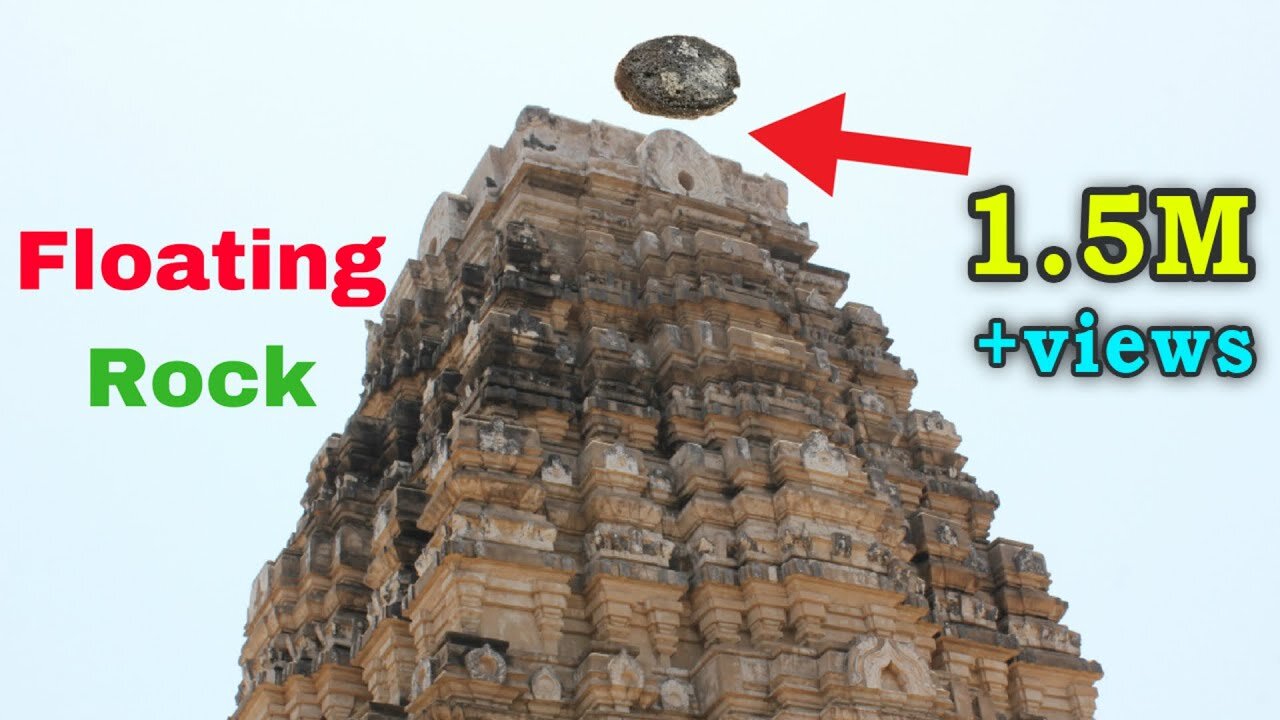Premium Only Content

Floating Rocks Of Ramappa Temple - Ancient Technology in India | Hindu Temple |
Instagram :- https://instagram.com/praveenET
Twitter :- https://twitter.com/IamPraveenMohan
Email id :- phenomenaltravelvideos@gmail.com
This is my PayPal account if you would like to support me :- https://paypal.me/hindutvawadi
0:00 - Artificial Rock
0:56 - AAC Blocks
1:38 - 800 Years Old Artificial Bricks
1:59 - WHY Did they make these?
4:07 - Survived An Earthquake
5:47 - Miniature Model
6:31 - Sandbox Technology
7:20 - Conclusion
Hey guys, this is a rock taken from an 800 year old temple in India, and it has some strange properties. When dropped in water, it doesn't sink like normal rocks, it floats. There are some rocks which naturally float in water, like Pumice but this rock you see here, is not a natural formation. In fact this is not a rock, it is a brick, made by heating a mixture of mud and other materials to a 1000 degree Celsius, and was made into a lightweight block.
During my recent exploration I met 2 guys, Dinesh who is an architect and Arvind who researches ancient sites. They explained that we use the same technology today, these blocks are called ACC or AAC blocks. AAC stands for Autoclaved Aerated Concrete - and is made by injecting foam into concrete which makes the block lightweight. These blocks when dropped in water, also float just like the ancient brick we saw. If we look at the Wikipedia page, it shows that AAC was invented in mid-1920s, just 100 years ago. However, we can see that this technology was in use 800 years ago in India.
Now, we don't know what the ancient builders used to make the bricks float, and I could not get a sample of this brick to examine the ingredients. Since we don't know how it was created, let's move on to Why these bricks were created. I mean, what could possibly be the use of creating such lightweight bricks in Ancient India. This brick was taken from a temple called Ramappa temple, so I decided to go to the temple and find out why these light weight bricks were used.
You can see that this is a fabulous temple, the bottom portion is made of sandstone, which stands to a height of more than 25 feet, but there is a huge tower on top which is completely made of these floating bricks. It has now been covered with plaster of Paris by the archeology department. Why did ancient builders decide to create and use lightweight bricks for the tower? Why do we use AAC blocks today? Modern Engineers recommend the use of lightweight blocks in buildings to make them earthquake proof.
Structures built with heavy materials become rigid and are less flexible when earthquake occurs. When an earthquake happens, the building can sway horizontally or vertically and if the building is too rigid, it will start cracking and begin to collapse. On the other hand, light weight blocks like these floating Bricks, have these holes and are half the weight of regular bricks - these can make the structure more flexible to ground movement. If we make a building with these floating bricks, the building will swing and sway along with the ground, and will not collapse. This is exactly why, these floating bricks were used on the tower, to make it earthquake proof.
#Ancienttechnology #Hinduism #India
-
 1:08:28
1:08:28
In The Litter Box w/ Jewels & Catturd
22 hours agoCrenshaw Threatens Tucker | In the Litter Box w/ Jewels & Catturd – Ep. 749 – 2/25/2025
46.8K27 -
 44:57
44:57
Standpoint with Gabe Groisman
22 hours agoWill Byron Donalds Run for Florida Governor? With Congressman Byron Donalds
15.2K2 -
 DVR
DVR
Savanah Hernandez
1 hour agoEXPOSED: FBI destroys evidence as NSA’s LGBTQ sex chats get leaked?!
29.8K4 -
 LIVE
LIVE
Revenge of the Cis
3 hours agoEpisode 1452: Hindsight
1,457 watching -
 1:20:35
1:20:35
Awaken With JP
5 hours agoCrenshaw Threatens to Kill Tucker and Other Wild Happenings - LIES Ep 80
66.4K41 -
 1:32:19
1:32:19
Russell Brand
4 hours agoBREAK BREAD EP. 15 - LECRAE
88.1K8 -
 1:37:26
1:37:26
The Officer Tatum
4 hours agoLIVE Rachel Maddow, Don Lemon MELTDOWN Over Joy Reid's FIRING! + More Ep 68
58K23 -
 1:11:24
1:11:24
The Gateway Pundit
2 hours agoEpstein & JFK Files BLOCKED: Luna’s SHOCKING Clash with Pam Bondi! | Elijah Schaffer & Jim Hoft
96K24 -
 LIVE
LIVE
John Crump Live
7 hours ago $0.20 earnedFake Gun Advocates.
86 watching -
![[Ep 616] Colony Ridge History & Raids | Guest: Elsa Kurt | Crenshaw Unhinged – Wants to Kill Tucker](https://1a-1791.com/video/fwe1/4d/s8/1/K/3/M/j/K3Mjy.0kob-small-Ep-616-Colony-Ridge-History.jpg) LIVE
LIVE
The Nunn Report - w/ Dan Nunn
2 hours ago[Ep 616] Colony Ridge History & Raids | Guest: Elsa Kurt | Crenshaw Unhinged – Wants to Kill Tucker
241 watching